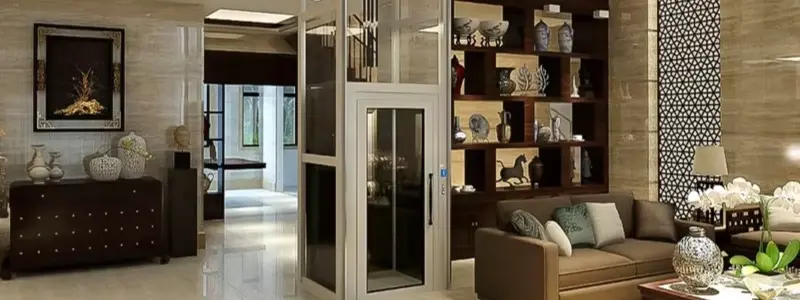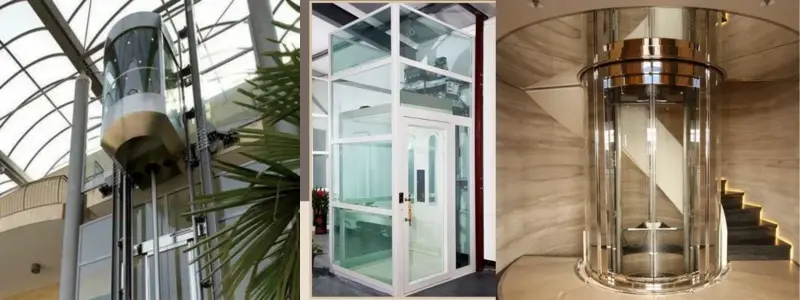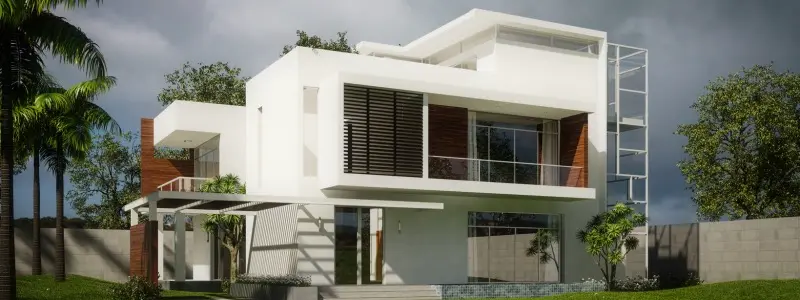Do stairs feel more like an obstacle than a convenience? Whether you’re hosting guests, managing a growing family, or dealing with mobility challenges, the limitations of multi-story living can become frustrating. A villa elevator isn’t just a luxury; it’s a practical solution to improve accessibility, convenience, and property value.
Yes, villa elevators are a perfect investment. They eliminate the hassle of climbing stairs, enhance your home’s usability, and offer a luxurious feature that adds long-term value to your property. Plus, with modern technology, they’re safe, efficient, and customizable to suit your needs.
Still undecided? Let’s address every question you might have about villa elevators, from costs to installation, ensuring you have all the answers you need.

Can Villa Elevators Be Installed in Existing Homes?
Absolutely! Many homeowners worry about whether an elevator can fit into their existing space. The good news is that villa elevators are designed to be versatile. Compact models like screw-driven or pneumatic elevators require minimal structural changes and can be installed in as little as 15 square feet of space.
For new constructions, you can integrate an elevator into the blueprint, ensuring an even more seamless look. Existing homes, however, can also accommodate elevators with careful planning. Our team specializes in customizing designs to fit your villa without compromising aesthetics. Explore retrofit elevator options here.
What Are the Types of Villa Elevators, and Which One Should I Choose?
Choosing the right type of elevator depends on your home’s layout, personal preferences, and budget. Here’s a breakdown of the main types:
Hydraulic Elevators:
- Reliable and smooth.
- Ideal for villas with more space.
- Can handle heavier loads, making them perfect for families with frequent visitors or heavy furniture.
Traction Elevators:
- Space-saving with no need for a machine room.
- Efficient and quiet.
- Great for compact villas or modern interiors.
Screw-Driven Elevators:
- Highly compact and easy to install.
- Requires no pit or machine room.
- A low-maintenance solution perfect for smaller homes or quick installations.
Learn which type fits your needs.

How Much Does a Villa Elevator Cost?
Cost is one of the top concerns for homeowners. A villa elevator’s price varies depending on size, design, materials, and added features. Here’s a rough breakdown:
- Entry-Level Models: Starting at $10,000–$20,000. Basic functionality, reliable performance, and simple designs.
- Mid-Range Models: $20,000–$50,000. Includes customization options like decorative interiors, larger capacities, and advanced technology.
- Luxury Models: $50,000 and above. Features include panoramic glass, intricate designs, and top-tier safety systems.
Don’t forget, villa elevators often increase your property value, making them a sound investment. Request a custom quote here.
How Long Does Installation Take?
The timeline depends on your chosen elevator type and your home’s existing structure. On average:
- Hydraulic or Traction Elevators: 3–6 weeks, including structural modifications.
- Screw-Driven or Pneumatic Elevators: 2–4 weeks due to simpler installation requirements.
Factors like permits, inspections, and custom designs can extend the timeline slightly, but we handle these complexities for you. Find out more about the installation process.
Are Villa Elevators Safe for Families with Kids or Pets?
Safety is always a top concern, and modern villa elevators come equipped with:
- Emergency brakes and backup power systems.
- Overload sensors to prevent misuse.
- Secure, child-proof doors to keep little ones safe.
Additionally, regular maintenance ensures long-term reliability and safety. Our elevators are rigorously tested to comply with international safety standards. Explore safety features.

How Much Space Does a Villa Elevator Require?
Space requirements vary by type:
- Compact Models: Start at 15–20 square feet, making them ideal for tight spaces.
- Hydraulic or Larger Models: Require 25–30 square feet, with room for a machine room.
If you’re tight on space, glass elevators can blend seamlessly into your design without overwhelming the room. Customization ensures even the smallest villas can accommodate a lift. Check space-saving elevator designs.
What About Energy Consumption?
Modern villa elevators are energy-efficient and environmentally friendly. Traction elevators use counterweights to reduce power usage, while hydraulic systems operate with minimal energy.
Installing LED lighting and standby modes further cuts energy costs. Eco-conscious homeowners will appreciate options like solar-powered models or elevators made from sustainable materials. Learn about green elevator options.
Do I Need a Permit to Install a Villa Elevator?
Yes, permits are usually required. Here’s what you need to know:
- Local Building Codes: Vary by region but typically involve safety inspections and compliance certificates.
- Historic Properties or HOAs: May require additional approvals.
- Our Role: We handle the permitting process to save you time and ensure compliance.
A professional installer will guide you through the process, ensuring no steps are missed. Check out permit requirements here.
What’s the Maintenance Process Like?
Regular maintenance ensures your elevator stays in top condition. Maintenance typically includes:
- Lubrication of moving parts.
- Inspection of cables, brakes, and safety systems.
- Replacement of worn-out components.
We offer comprehensive maintenance packages, so you’re never left in the dark about the status of your elevator. View maintenance plans.
How Do Villa Elevators Enhance Property Value?
Beyond convenience, villa elevators significantly boost property value. Homebuyers see elevators as both a luxury and a necessity for long-term accessibility.
Adding an elevator makes your property future-proof, accommodating aging-in-place solutions for families. Plus, its design can elevate the overall aesthetic appeal of your home.
Conclusion
A villa elevator is more than a tool for moving between floors—it’s a lifestyle upgrade. From enhancing accessibility to boosting property value and creating a luxurious living experience, villa elevators are worth every penny.
Still have questions? Reach out to us at info@ljelevator.com. Let’s design a villa elevator tailored to your home, needs, and style!





